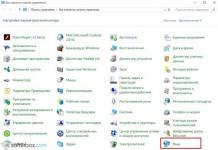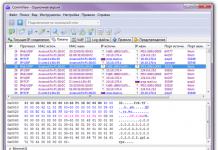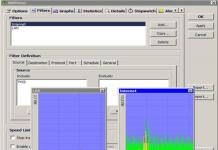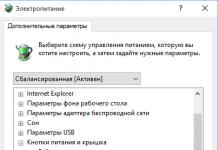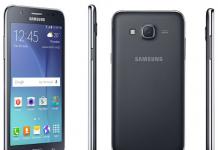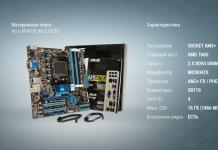The completely redesigned Control Center is one of the best features of iOS 11. It is the epitome of convenience and includes new toggle switches to replace those that were previously found in Control Center but were not used often.
But it takes some time to get used to the new Control Center. The behavior of the Wi-Fi and Bluetooth switches is especially problematic. Many users complain that they can't really turn off anything.
However, as it turns out, this is not a mistake. Apple explained that the switches disconnect the device from Wi-Fi networks and Bluetooth devices, but leave important services like AirDrop, AirPlay, connection to the Apple Pencil and Apple Watch, and location available.
Wi-Fi and Bluetooth indicators in iOS 11 Control Center: how they work
So how are you supposed to tell if Wi-Fi and Bluetooth are actually disabled? Fortunately, this is easy to do. The appearance of the indicators allows you to separate three states of wireless networks:
- Connected
- Disconnected
- Turned off
"Connected"– When Wi-Fi and Bluetooth are active, the indicators turn blue.
"Disconnected"– When you deactivate Wi-Fi and Bluetooth through Control Center in iOS 11, the color of the switches turns gray.

"Turned off"- when Wi-Fi and Bluetooth are disabled through Settings, the color of the switches turns gray and they themselves become crossed out.

We hope this clears things up a bit with the toggles in Control Center in iOS 11.
How to disconnect from Wi-Fi networks and Bluetooth devices without affecting AirPlay, Apple Watch and Apple Pencil
Step 1: Swipe up from the bottom of the screen to bring up Control Center.
Step 2: Tap the Wi-Fi or Bluetooth switch.
Its color will change from blue to gray, and your iPhone or iPad will disconnect from all Wi-Fi networks and Bluetooth devices it was connected to. The only things that won't disconnect are the Apple Watch, Apple Pencil, and Continuity features.
How to completely disable Wi-Fi and Bluetooth on iOS 11
If you really want to completely disable Wi-Fi and Bluetooth on iOS 11, follow these steps.
Step 1: Launch the Settings app.
Step 2: Select the Wi-Fi or Bluetooth section.
Step 3: Use the switch.

What do you think about this innovation in iOS 11? Are you already used to it or are you still confused? Tell us in the comments below.
Don't miss Apple news - subscribe to our Telegram channel, as well as YouTube channel.
The new iOS 11 (as in previous versions of the OS up to and including iOS 7), as you know, also has its own “Control Center”, which also has separate switches for Bluetooth and Wi-Fi. Should I turn it off, should I turn it on. Very comfortably. It would seem that…
But that's not all. If you turn off Bluetooth and/or Wi-Fi in Control Center, both systems will still automatically activate at 5 a.m. your time or after the first reboot of your smartphone or tablet. Plus, Wi-Fi will automatically turn on when your location changes.
In this regard, about…
How to Truly Disable Bluetooth and Wi-Fi in iOS 11
They say that Apple’s new “feature” was discovered when some users rushed en masse to turn off Bluetooth and Wi-Fi in their iPhones and iPads in order to protect them from BlueBorne attacks, while others simply out of habit tried to turn off wireless modules to save charge battery One way or another, but here many people learned that through the “Control Center” now neither one nor the other is actually turned off.
Therefore, now we will turn off Bluetooth and Wi-Fi in iOS the old fashioned way, as in those distant times when the iPhone did not yet have any “Control Centers”, that is:
- when you need to turn off Bluetooth, click "Settings" -> Bluetooth -> Off ;
- when you need to turn off Wi-Fi, click "Settings" -> Wi-Fi -> Off .
By the way, public opinion regarding this problem is naturally divided. And in that part of the public that believes that “we need to do everything as before,” they voiced the idea of adding a “long press” to the functionality of the switches, which would be fashionable to turn off wireless modules quickly and without the need to go to “ Settings". How do you like this?
Although iOS 11 adds many new features and improvements, it is not perfect at first and requires bug fixes. However, some errors can be corrected manually, rather than waiting for Apple to release the appropriate patch. This article contains ways to troubleshoot various Wi-Fi problems on iPhone and iPad running iOS 11.
Common errors reported by users include being unable to connect to the network, being told that the password is wrong when it is definitely correct, being unable to change any settings in the Wi-Fi menu, repeatedly resetting the connection, or incredibly slow speeds.
Force reboot
Aka Force Restart. Let us remind you that on all smartphones up to and including the iPhone 6s, this can be done by simultaneously pressing the power button and the Home key for 10 seconds. On the iPhone 7 and 7 Plus, “Home” has become a touchscreen, so you need to hold down the volume down key instead. After rebooting the device, Wi-Fi problems usually disappear.
Forget the network and connect to it again
If you use your usual Wi-Fi (for example, at home or at work), try selecting the desired Wi-Fi in the Wi-Fi settings menu, open additional settings and select “Forget this network.” After that, connect again. If the network is password protected, you will have to enter it again.
Turn off VPN
If you are using a VPN, try disabling this feature temporarily and see if that solves your Wi-Fi problem.
Disable the use of Wi-Fi for geolocation

To do this, in the settings, select “Privacy” > “Location Services” > “System Services” and deactivate the “Wi-Fi Networks” item. Reboot your device.
Disable "Wi-Fi Assist"
Wi-Fi Assist was introduced in iOS 10 and is quite an interesting tool. Once activated, it compares the speed of the current Wi-Fi network and the connection via 3G or LTE. If the Wi-Fi signal is too weak or the speed is too slow, the system will automatically switch you to the mobile network. Try disabling this feature: it is located in the settings in the “Cellular” menu under the list of traffic consumption by various programs and the “Deleted applications” item.
Reset network settings

A fairly tough method that we would recommend you leave as a last resort if other methods do not help. You need to select “General” > “Reset” > “Reset network settings” in the settings menu. After this, the device will forget all passwords and known networks, cellular network settings, and previously used VPN and APN settings.
Don't miss Apple news - subscribe to our Telegram channel, as well as YouTube channel.
With the next update of the mobile operating system on Apple iPhones, a bug appeared that WiFi in iOS 11, 12 and 13 does not turn off if you deactivate it in the new curtain with control icons. The same goes for Bluetooth. Another feature is that when you restart the phone, Wi-Fi turns on on its own on the iPhone, although it seemed to be turned off before. What to do and how to disable it permanently?
Let me remind you that this is what the icons look like when they are on:
And this is how we “turn off” Wi-Fi on iOS 11.

It's actually simple. I don’t know if the developers missed the mark or if this is a feature of the new OS, but when you turn off WiFi and Bluetooth using the icons on this curtain, they only break off all current connections and go into standby mode. But at the same time, the wireless modules continue to work and eat up the iPhone’s battery power.

The solution to the problem is to go to “Settings” - we see that the status of WiFi and Bluetooth is “Not connected”. We go into them and see that the toggle switch is in an active state.

We turn it off and go back a step and see that the status has changed to “Off,” that is, the modules are disabled.

Now if you pull out this curtain, the icons will not only be inactive gray, but will also be crossed out.

That's all - now WiFi on iOS 11 is turned off and will no longer consume your smartphone's battery.
When does WiFi and Bluetooth turn on automatically on an iPhone?
If you use only the icons from the curtain of the iPhone control panel, then after deactivating any wireless module, WiFi and Bluetooth will automatically turn on in the following cases:
- When changing geolocation
- After iPhone reboot
- 5am your time
Free access to wireless Internet is one of the most important points of using modern gadgets. According to statistics, many users of popular iPhones are concerned about the question: why does Wi-Fi crash on the iPhone? Problems with network signal loss worry a large number of consumers. Let's try to figure out the cause of the problem.
Why does iPhone disconnect from Wi-Fi in standby mode?
If your smartphone is slow to connect to the wireless network, the router may be slowing down - check the speed of the router. If Wi-Fi does not work, the gadget does not receive a signal, freezes, the icon flashes with a gray indicator, and the mobile Internet button does not light up at all. Another sign is low speed and failure in network settings.
The iPhone switches from standby mode to battery saving mode - Wi-Fi does not turn off. Various routers are configured to automatically disconnect users who have not used the network for an extended period of time. Check to see if this is the reason why the connection signal on the phone disappears. To determine the exact cause of the problem, connect to the local network through another router - in a cafe or public institution. Disable mobile Internet access first. The smartphone screen will go dark, ask to send a message - if the notification has arrived, the signal has appeared. You can check it from a personal computer or tablet: put it in sleep mode and look at the Wi-Fi icon. If your iPhone doesn't connect to the network, look for problems with your router.
Instructions for troubleshooting WiFi problems
- try connecting to your neighbor’s Wi-Fi - if it works, look for a problem in your router;
- Monitor the connection to the router. You can check from another gadget by turning on sleep mode on your iPhone.
How to set up a router:
- In your personal account, find the item “Time IP address rental” in the settings. Change the value of the variable - add a few weeks or a month;
- disable encryption mode;
- Changing the Wi-Fi channel is another option for setting up a router.
Some router models are equipped with the Wireless Multimedia Extensions feature, which automatically minimizes failures, errors and lost packets during transmission over the local network. If your device is equipped with it, turn it on. If your router supports the 2.4/5 GHz band, move the slider to this mark.
Install the latest version of iOS
Download updates this way:
- Select the “Settings” icon on the desktop.
- Go to the “Basic” sub-item in the menu that opens.
- Click on the line “Software Update”.
- In the window that opens, install the proposed update or receive a message that “The latest software has been installed.”
The iTunes app can help you update. If none of the above works, try downloading the firmware file for iTunes and update it to the latest version.
Do a forced reboot
A reboot can solve the problem with signal loss. If the cause of the problem is a software failure, rebooting the phone will be enough - everything will return to its place. After the process is completed, connect your smartphone to the network.
Disconnect from your wireless network and reconnect
What should you do if you hit the network icon and a notification about an incorrect password appears? Click the “Forget network” option and reconnect in the wireless menu.
Change the request to connect to wireless networks
Go to settings, turn on the “Confirm connection” option - your phone will automatically show a request for the wireless network that appears. If there is no access to a previously connected home network, you need to manually establish a connection. There is a way to exclude a network from the list: click the button with the “I” icon next to the selected network and go to the “forget network” option.
Disabling Wi-Fi Assist
To disable this feature on your mobile device, go to settings and select the Cellular field. At the very bottom of the list there is a “Wi-Fi Assist” function. Next, it is recommended to drag the slider to the side, turning off the function. The button background should change color to white.
Disable VPN
If you previously changed the VPN function in the settings or through the application, you should disable this feature. To do this, go to the settings and open the “General” item. Find “VPN” in it. If you have a special program installed, you need to disable the function there.
Disable location services
In situations where the iPhone constantly loses the network and there are connection problems, try simply disabling a certain service. To do this, you need to click on the “Privacy” menu, click on the “System services” column (they can be found in geolocation services. If you follow this algorithm, you can solve the problem of Wi-Fi turning off when blocked and the icon disappearing in the control panel. In this case, the signal is not completely will disappear, since the switch only affects your location.
Set up a different DNS server
Changing this service often solves the problem if Wi-Fi turns off on its own. DNS servers can be configured incorrectly, so problems like this are not uncommon. To change the server to OpenDNS, you need to go to settings and click “WiFi”. Find your home network and select “i”, click “Router” and enter the numerical combinations that can be viewed on the official website.
Reset network settings
A large number of connection problems and problems can be resolved by resetting your wireless network settings. This manipulation will erase your data that was previously used for connection. You can delete it in the “Settings” menu item, “General” sub-item. The default is “Reset” and indicate which network you want to delete.
Complete reset of content and settings
A general reset of automatic network settings is considered a drastic method for solving a problem in which Wi-Fi turns off. You can do this yourself, without contacting a service center. The iTunes application is suitable for performing the manipulation. If you were unable to reset the settings on your own, contact a service center employee for help. You may have to pay attention to the hardware of the phone.
Hardware failure of the Wi-Fi module
The hardware problem is not related to the operating system firmware or software containing malicious files. A service center specialist can solve the problem. Poor quality repairs affect the functioning of the device, not only the operation of Wi-Fi.
Carefully! Further actions may result in the destruction of the modules of your smartphone!
Several life hacks for restoring your phone hardware yourself:
- turn on your smartphone. Warm it up with hot air from a hairdryer (device on high power). A notification appears on the screen indicating that the temperature level is too high - stop heating. The final stage is to reboot the gadget;
- If there is no local network connection, keep the phone in the freezer and reboot.
Also, poor operation of the wireless network is possible after poor-quality repairs, for example, after replacing the screen. The iPhone screen is specifically designed to provide better reception through a metal ring on one of their screw mounts. Either the metal ring is missing from your shield or the screw is loose. Sometimes a rusty screw can cause a weak Wi-Fi signal.
Look at the image of the top with a metal ring:

It is worth remembering that the iPhone is a device that requires a special approach. Repair work is carried out by a specialist, so if you are not sure of the correctness of the above steps, do not take risks.


